The following is an excerpt from Reopening the World: How to Save Lives and Livelihoods, a new report where Brookings experts offer ideas to help policymakers protect lives and save livelihoods in the midst of the current COVID-19 pandemic.
 The deadly global spread of the COVID-19 pandemic has coincided with a period of diminishing capacity among multilateral institutions such as the G-7, the G-20, and the United Nations to mount a coordinated international response. It also has occurred amidst a period of deteriorating relations between the world’s two most capable powers, the United States and China.
The deadly global spread of the COVID-19 pandemic has coincided with a period of diminishing capacity among multilateral institutions such as the G-7, the G-20, and the United Nations to mount a coordinated international response. It also has occurred amidst a period of deteriorating relations between the world’s two most capable powers, the United States and China.
Instead of serving as a shared threat that catalyzes a coordinated response, COVID-19 has intensified frictions between the United States and China. This has manifested in a “narrative war” between Washington and Beijing over the source of the virus and the apportionment of blame over its global spread. Leaders in both countries have each calculated the impacts of the pandemic on their political fortunes and decided that their best path forward is to blame the other and stoke nationalistic impulses in the process.
Instead of serving as a shared threat that catalyzes a coordinated response, COVID-19 has intensified frictions between the United States and China.
A PERIOD OF RECIPROCAL RANCOR
This dynamic of reciprocal rancor is both unnecessary and unlikely to stop any time soon. It is unnecessary because it is not a source of uncertainty as to where the virus originated and what led to its global spread. No one who has been closely watching the unfolding of the pandemic outside of China could be confused that the virus emerged anywhere other than China, or that China’s negligent initial response to the outbreak did not contribute to its spread. China appears to have sought to muddy this picture by having one of its spokespeople spread a conspiracy theory that the virus may have originated in the United States. China’s propaganda services similarly have been energetic in efforts to deflect blame and instead promote China’s response to the outbreak as a model for the world. But as Joseph Nye has observed, influence and power on the international stage rest on credibility, and when governments are perceived as pushing propaganda, their credibility is undermined.
Prior to this crisis, there had been precedent for the world’s two leading powers to stand at the core of international efforts to galvanize global responses. This pattern was visible during the Cold War, when the United States and the Soviet Union rallied global action to eradicate smallpox. It also was seen more recently when the United States and China coordinated actions to rescue the global economy during the 2008–09 global financial crisis and then halt the spread of Ebola from Africa in 2014.
Sadly, it likely already is too late to revive such a pattern of national-level coordination between the United States and China during this crisis, given the ill will that has been generated in both countriesabout the other in recent weeks. China’s recent efforts to tighten control over Hong Kong have further poisoned U.S.-China relations. This is an unfortunate outcome. If it was possible to set aside politics and look at the COVID-19 problem through a narrow interest-based lens, there would be a clear rationale for both countries to collaborate to save lives, stop the spread of the virus, and hasten a global economic recovery.
The simple reality is that neither country will be able to stamp out the virus in every corner of the world on its own. There are no multilateral institutions with the capacity and the credibility to do so without the strong backing of the United States and China. Unless the virus is eradicated everywhere, citizens in both countries will remain at risk, both countries’ economies will suffer, and the international reputations of both will be tarnished for failing to exercise leadership amidst a global crisis.
If somehow the relationship between the United States and China were in a better spot, and the political calculations of both countries’ leaders were different, there is much that could be done at little cost to either. Such collaboration could be driven by dispassionate self-interest.
PRACTICAL STEPS TO SHORTEN THE PERIOD OF SUFFERING INDUCED BY COVID-19
Initial steps that both countries could take to hasten the process of getting COVID-19 under control and create conditions for reopening the global economy could include:
- reaching a reciprocal understanding on expediting visas for medical personnel and encouraging other countries to follow suit so that health experts can travel quickly to where they are most needed to contain the spread of the virus;
- announcing a joint decision to remove all tariff barriers on medical equipment and urging other countries to follow suit;
- jointly agreeing to refrain from export bans on life-saving medical equipment and to coordinate efforts to stabilize global supply chains for manufacture of such goods;
- convening a virtual summit between both US and Chinese leaders to affirm that both countries commit to:
- support—and not to impede— coordination among sub-national actors, including at the state, city, scientific, philanthropic, and corporate levels;
- offer full support for accelerating clinical testing of any vaccine, without regard for where it is first developed;
- refrain from any form of traditional or non-traditional espionage to attempt to subvert progress or steal information from the other on research toward a vaccine;
- pool funds now to construct a constellation of facilities around the world for rapid manufacture of a vaccine. Because it is not yet known what equipment will be needed to manufacture the vaccine that ultimately emerges, facilities will need to be built to specification for mass producing a range of potential vaccines, accepting that some will never get used;
- coordinate delivery of medical and financial aid to the developing world in order to avoid redundancy and maximize impact.
A more ambitious effort could include jointly standing up teams composed of leading international medical experts to fan across the global south and get ahead of the next wave of the virus, which is already starting to hit the Southern Hemisphere. These expert teams could share best practices with local health leaders for protecting medical staff, patients, and medical systems, provide resources and best practices for testing and tracing, and share lessons learned from various treatment models.
Washington and Beijing also could jointly boost the efforts of a >global group convened by the European Union to coordinate funding for vaccine research, development, and production. If the United States and China each were to make significant contributions to this fund, it could mobilize other countries to elevate their support for the effort.
THE NEED FOR A CEASEFIRE
Creating diplomatic space for such a constructive agenda, though, likely would require some sort of ceasefire in the promulgation of incriminating theories about the source of the virus. One way for both sides to set down their rhetorical sticks would be for Washington and Beijing simultaneously to commit to support an international investigation led by scientific experts into the causes of the outbreak and rapid spread of the virus. President Xi made a rhetorical step in this direction during his May 18 address to the World Health Assembly. Washington should test Beijing’s intentions by pushing for a firm Chinese commitment to support a science-based, UN-led after action review to identify lessons learned, mistakes made, and best practices to be emulated for preventing a recurrence of this crisis.
Some may counter that China is America’s foremost rival and, as such, the United States should be seeking to use this moment to weaken China’s standing rather than lift it up to peer status in the fight against COVID-19. Others may see such a collaborative approach toward China as unwarranted due to China’s negligent initial response to the outbreak, which contributed to its global spread. Still others may argue that Washington should work with its allies, not Beijing, to fashion a global response.
All these arguments deserve a hearing. The Trump administration is justified in weighing risks and rewards of working with China on COVID-19 response. Ultimately, though, COVID-19 is indifferent to national borders and American feelings about China’s culpability for the pandemic. America’s prestige on the world stage at the end of this crisis will be determined by its performance in stopping the spread of the virus, saving lives, and restoring the American and global economies to health. For the moment, all other considerations must be subordinated to these objectives.
If there is a more efficient and effective way for addressing challenges presented by COVID-19 than by taking measured steps with Beijing to galvanize global action, now is the time to hear them. There should be a robust debate about the costs and benefits of working with China versus attempting to work around China on global efforts to create conditions for reopening. Rosy assumptions—either about China supporting America’s lead or about the G-7 or G-20 falling in line to advance an American agenda—should be interrogated. The crisis has imposed an urgency for the best ideas to come to the surface. There is no time to waste.
The Brookings Institution is committed to quality, independence, and impact.
We are supported by a diverse array of funders. In line with our values and policies, each Brookings publication represents the sole views of its author(s).

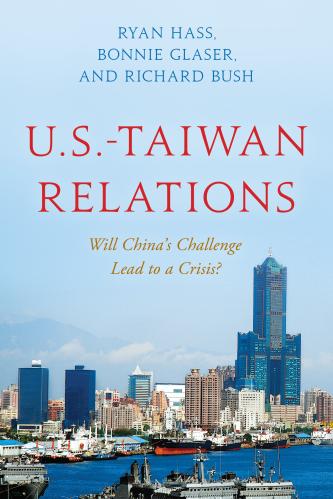
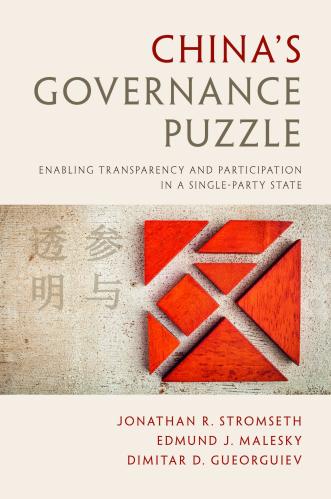
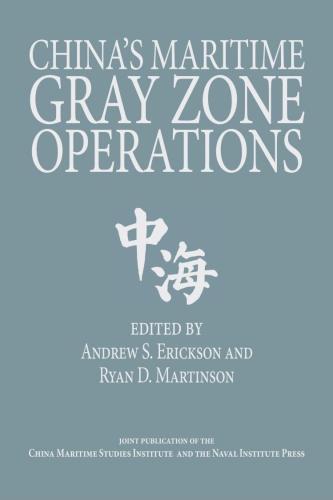
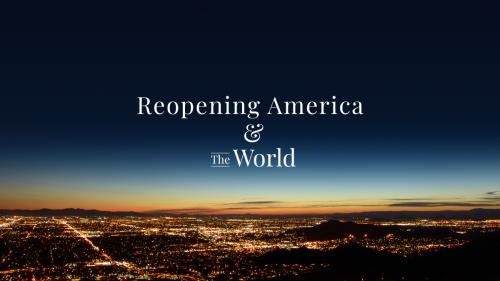
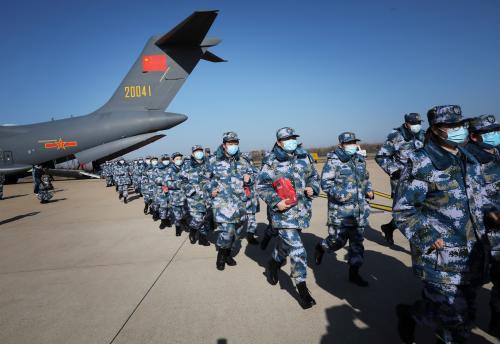
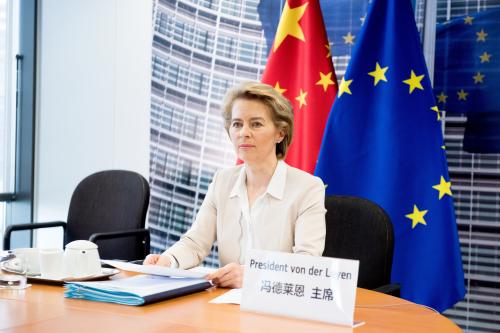




Commentary
Reopening the World: The fastest route to ending this crisis involves China
June 16, 2020